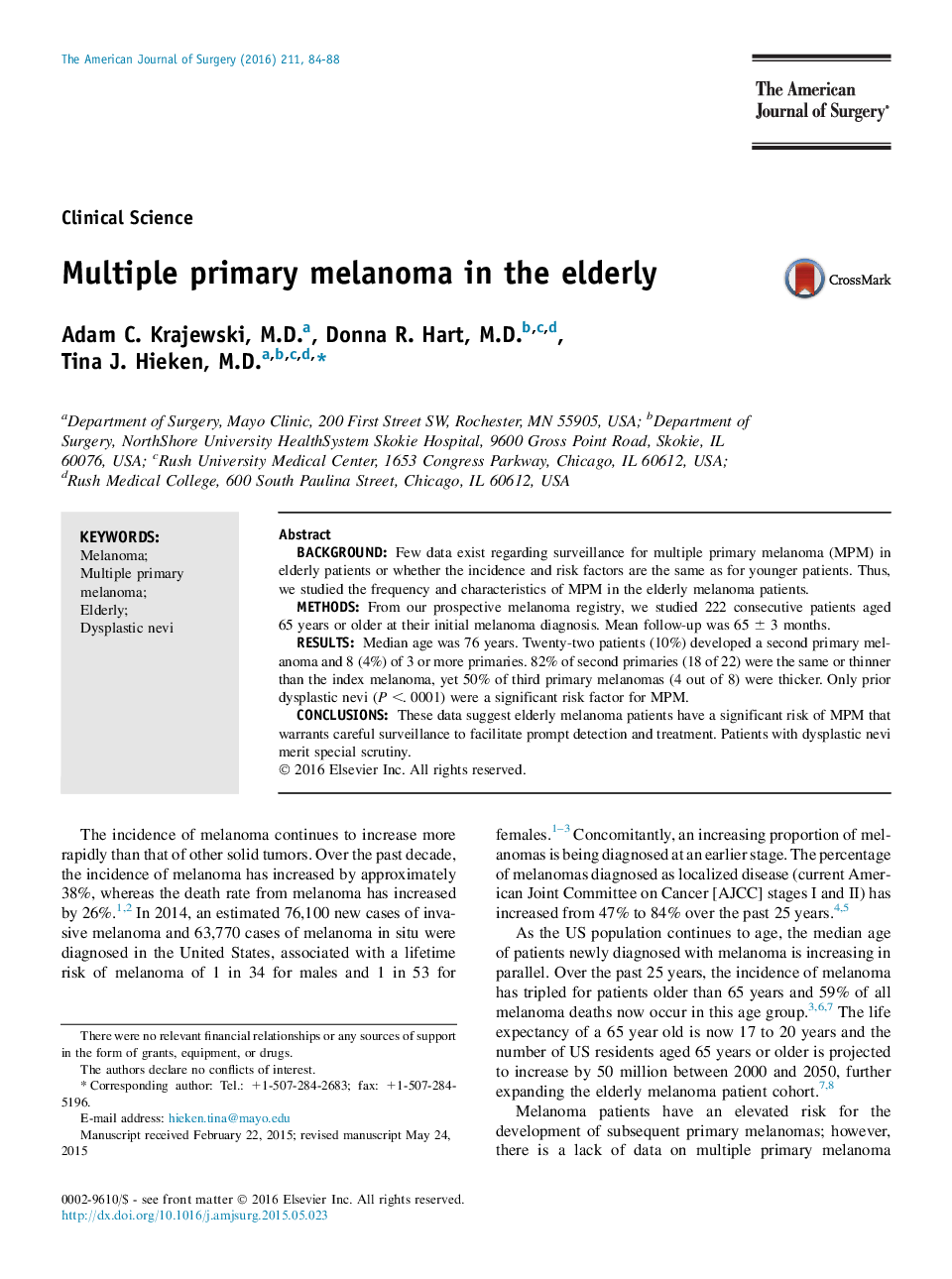| Article ID | Journal | Published Year | Pages | File Type |
|---|---|---|---|---|
| 6250433 | The American Journal of Surgery | 2016 | 5 Pages |
â¢In our elderly patient cohort, 10% was diagnosed with a subsequent primary melanoma.â¢Among the elderly multiple primary patients, 36% had 3 or more subsequent melanomas.â¢Only prior dysplastic nevi were a significant risk factor.â¢Careful surveillance of older patients may permit prompt detection and treatment.
BackgroundFew data exist regarding surveillance for multiple primary melanoma (MPM) in elderly patients or whether the incidence and risk factors are the same as for younger patients. Thus, we studied the frequency and characteristics of MPM in the elderly melanoma patients.MethodsFrom our prospective melanoma registry, we studied 222 consecutive patients aged 65 years or older at their initial melanoma diagnosis. Mean follow-up was 65 ± 3 months.ResultsMedian age was 76 years. Twenty-two patients (10%) developed a second primary melanoma and 8 (4%) of 3 or more primaries. 82% of second primaries (18 of 22) were the same or thinner than the index melanoma, yet 50% of third primary melanomas (4 out of 8) were thicker. Only prior dysplastic nevi (P <. 0001) were a significant risk factor for MPM.ConclusionsThese data suggest elderly melanoma patients have a significant risk of MPM that warrants careful surveillance to facilitate prompt detection and treatment. Patients with dysplastic nevi merit special scrutiny.
